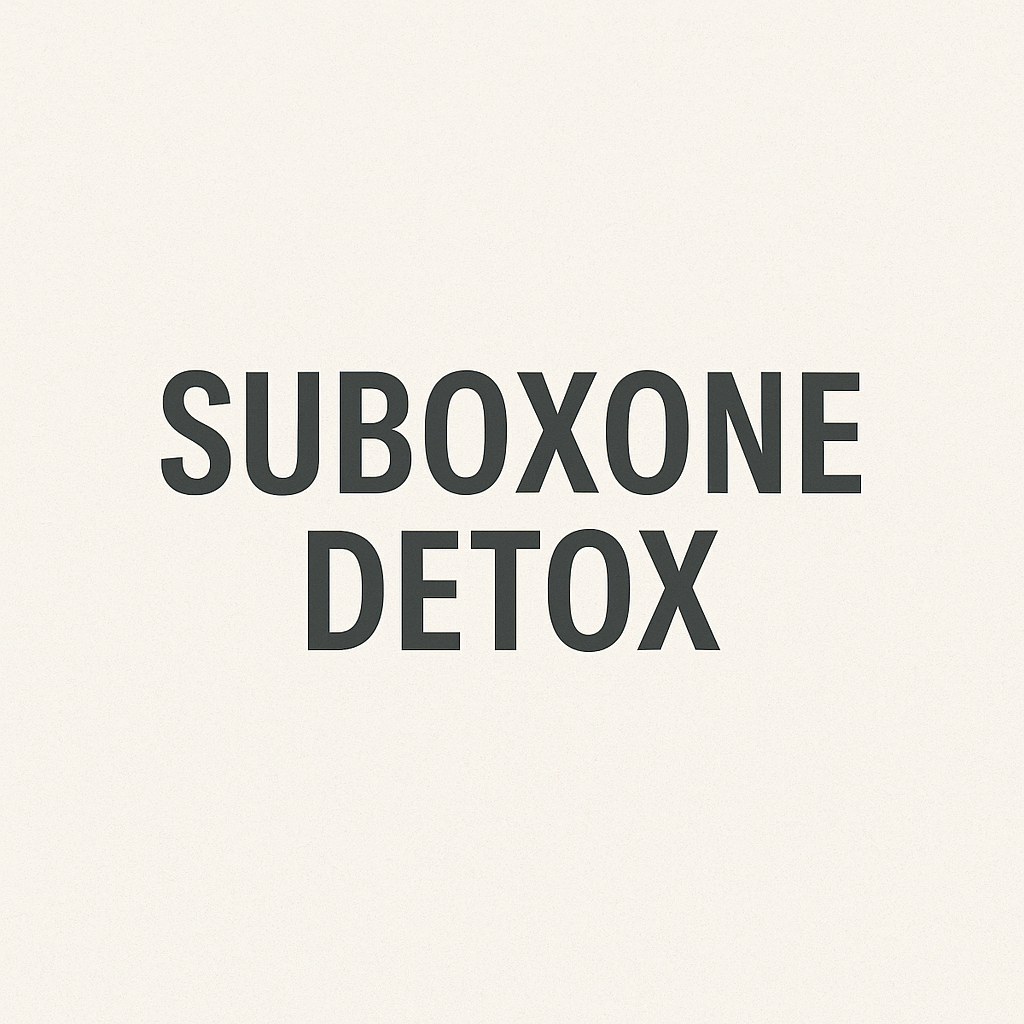
Suboxone Detox: Timeline, Symptoms, and How to Detox Safely
If you're researching suboxone detox, you're not alone. Suboxone, a medication used to treat opioid addiction, can be life-changing—but eventually, some users want to taper off. Detoxing from Suboxone isn't easy, but with the right knowledge and support, it can be done safely. In this guide, we'll walk you through the suboxone detox timeline, potential withdrawal symptoms, and available treatment options.
What Is Suboxone and Why Do People Detox?
Suboxone detox typically begins after someone has stabilized on the medication and is ready to live without it. Suboxone is a combination of buprenorphine and naloxone, designed to reduce opioid cravings and withdrawal. While it’s an effective maintenance drug, some individuals eventually want to discontinue it, especially after long-term use.
People choose to detox from Suboxone for different reasons: side effects, personal recovery goals, or lifestyle changes. Whatever the motivation, understanding how to detox with Suboxone is essential to avoid unnecessary discomfort or relapse. For those gaining insight into their journey, finding the right detox methods can be crucial.
Understanding the Suboxone Detox Timeline
The suboxone detox timeline can vary depending on factors like dosage, duration of use, and individual physiology. Because Suboxone has a long half-life, withdrawal symptoms typically begin 2–3 days after the last dose and can last for weeks.
- Days 1–3: Mild discomfort begins. Common symptoms include anxiety, insomnia, and muscle aches.
- Days 4–7: Symptoms peak—nausea, chills, fatigue, and mood swings are common.
- Weeks 2–4: Symptoms begin to fade, but psychological withdrawal—like depression or cravings—may persist.
Everyone’s experience is different. For some, tapering under medical supervision reduces the intensity and duration of symptoms. You can read more about drug detection timelines here to better understand how long substances like Suboxone remain in the system.
Can You Experience Detox Symptoms While on Suboxone?
Yes, you can. Many people report detox symptoms while on Suboxone—especially during a taper. Buprenorphine is a partial opioid agonist, so the body still adjusts when the dose is lowered. Symptoms during tapering can include irritability, restlessness, or insomnia, even before fully stopping the medication. Additionally, detoxing can affect the skin in unexpected ways.
It’s important to work with a healthcare provider who understands the nuances of buprenorphine to minimize discomfort during this process.
Suboxone Detox Near Me: Finding Support Locally
If you’ve been searching for suboxone detox near me, you’re likely looking for real help—not just online advice. Local options may include detox clinics, outpatient rehab centers, or holistic health practices. Look for facilities experienced with buprenorphine tapering and offering 24/7 medical support, especially during the first week of withdrawal. Exploring natural remedies like ginger detox may also be beneficial.
Many communities also offer peer support or Suboxone-specific counseling. In-person help is often the most effective, especially for those with long-term use or co-occurring mental health issues.
Home Detox vs Medical Supervision
While some choose to detox with Suboxone at home, it’s not recommended for everyone. Home detox can be dangerous, particularly without medical oversight or emotional support. Physical symptoms like nausea, cramps, and fatigue can escalate, while the risk of relapse remains high due to discomfort or cravings. Fortunately, understanding how to manage detox symptoms can help.
Supervised detox offers safer tapering protocols and access to medications that ease withdrawal. This may include sleep aids, anti-anxiety meds, or comfort care during the toughest phases.
Natural Detox Remedies for Suboxone Withdrawal
Some individuals look to natural solutions during Suboxone detox. While these shouldn’t replace medical care, they can complement a tapering plan. Herbal teas, supplements, and hydration all help regulate the nervous system. See our Herbal Detox Guide for plant-based detox support.
Many also explore detox drinks to flush residual compounds or support liver function during withdrawal. Products made with milk thistle, ginger, and activated charcoal may help alleviate symptoms, though results vary.
Staying Clean After Suboxone Detox
Once the physical withdrawal is over, the real work begins: staying clean. Many relapse because they weren’t prepared for life after Suboxone. That’s why it’s critical to develop coping mechanisms, join support groups, and avoid known triggers. If you're curious about drug testing policies, check out this helpful resource that outlines what to expect.
Some people use synthetic urine as a fallback during recovery, but be cautious—tests are evolving. If you're curious about how drug tests work, visit our Synthetic Urine Guide or check our page on Kratom testing before applying for work.
Conclusion: Suboxone Detox Is Possible—with the Right Plan
Suboxone detox isn't a one-size-fits-all journey. Whether you’re considering a taper, facing withdrawal symptoms already, or searching for suboxone detox near me, the key is support and preparation. Be kind to yourself. Healing takes time, and there’s no shame in getting help.
For more resources on detox strategies and wellness tips, check out our Detox Tips blog or browse our detox collection for supportive tools. Your journey to freedom is worth it—start strong, stay steady, and don’t go it alone.
Content Disclaimer
This blog post is intended for educational and informational purposes only. Nothing in this content should be interpreted as encouragement, advice, or instruction to use our products in any fraudulent or illegal manner.
All products sold are for novelty, fetish, research, or calibration use only. It is the customer’s responsibility to comply with all local, state, and federal laws.
